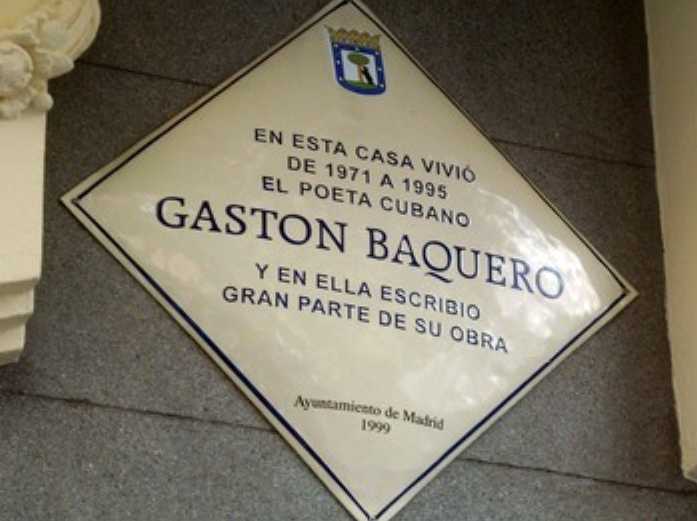4.1.2.6 The poetics of Gastón Baquero (1918 – 1997)

Gastón Baquero was a poet whose insight also focused on unraveling the springs of poetry as an act of creation, although not with the same systematic depth as that of José Lezama Lima, for example. His poetry denotes a naive approach to the surrounding reality, based on the Socratic principle “I only know that I know nothing,” but not solely philosophically, but rather in an experiential sense with religious overtones, establishing an implicit contrast with the omniscience of the creator.
Many of his poetic postulates, although he was not an intellectual poet nor excessively vigilant of harmony or aesthetics, were defined in his essay entitled “The Enemies of the Poet,” which he published in “The Poet” in 1942. In this text, one appreciates that Lezamian sense of the impossibility of accessing the essence of the phenomenon of poetry, of revealing its ultimate substance, concomitant also with the piercing hesitation of Dulce María Loynaz: “Poetry / Divine and wild female / When will I be able to mark your haunches with my error?”
In the aforementioned essay, Baquero states: “However, poetry is, we have almost forgotten, the creation that is made by and through language and feeling, against language and feeling, insofar as these notions are two dead ends, already immobile, before the universal substance. What escape does it have, what path awaits it, caught between its impure instrument, already committed to meaning and reflection, and its desire to be? Poetry perishes at every moment. Only as a very weak trace does it pass between the interstices it opens, with great difficulty, between the wall of language and feeling. In order to be, it must succeed in completely stripping each word and each feeling of all its dense clothing. To carry out this task with elements already inscribed in the enemy camp is nothing short of an impossible halt, a glorious absurdity.”
At the heart of his worldview is a religious sense of perpetual search for the divine, beyond immediate reality, within which he attempts to reconnect with it as a seamless whole. Death is certainly the most recurring theme in his work, not as an end but as a threshold to access truth, which he believes is not based on human knowledge but on God.
Despite this vision of death, it does not represent the poet’s longing, dazzled by the possibility of life and, in a way, by what might be called “the capacity for intensity.” In this sense, life and death constitute two sides of the same coin, but he affirms in “Prelude to a Mask”: “I don’t want to die tomorrow or ever. / I only want to become the fruit of a star.”
Gastón Baquero, who settled in Madrid after the triumph of the Revolution, took years to publish his complete works, which are not fully collected in “Magics and Inventions” (1984). His lyrical work includes “Poems” (1942); “Saul Before the Sword” (1942); “Poems Written in Spain” (1960); “Memorial of a Witness” (1966); and “Invisible Poems” (1991). He also published several literary studies, including: “Essays” (1948); “Hispanic-American Writers Today” (1961); and “Darío, Cernuda, and Other Poetic Themes” (1969).








